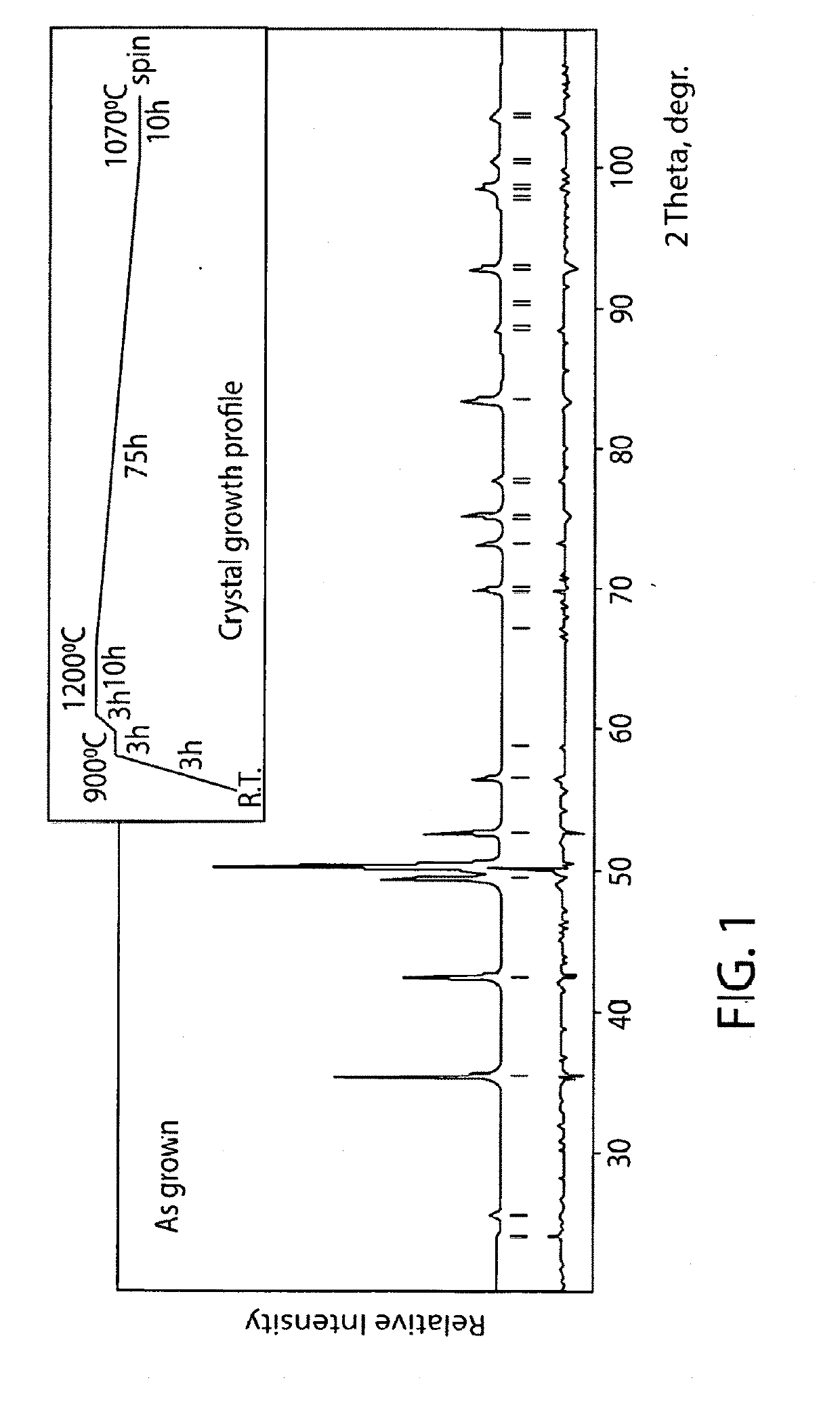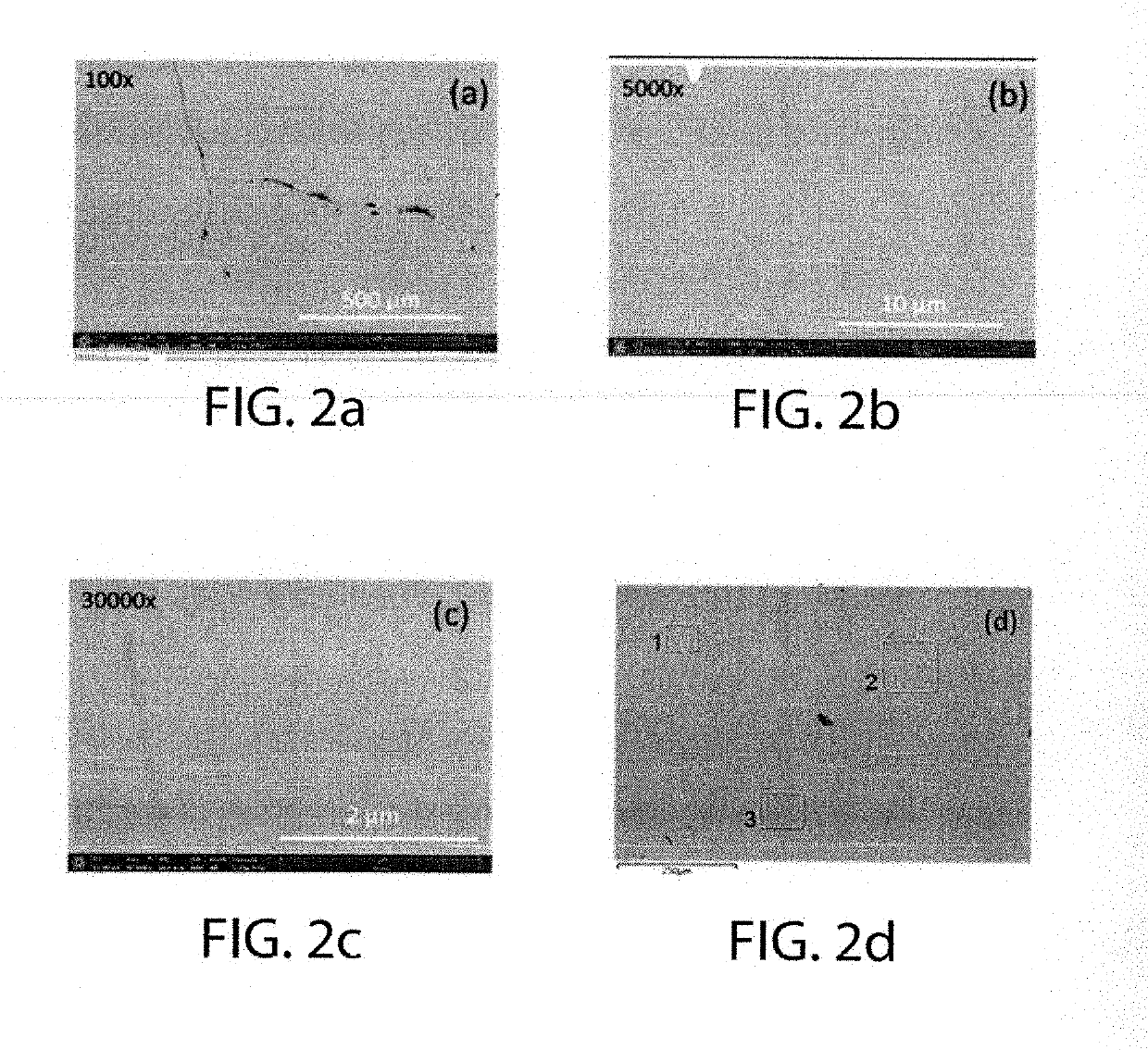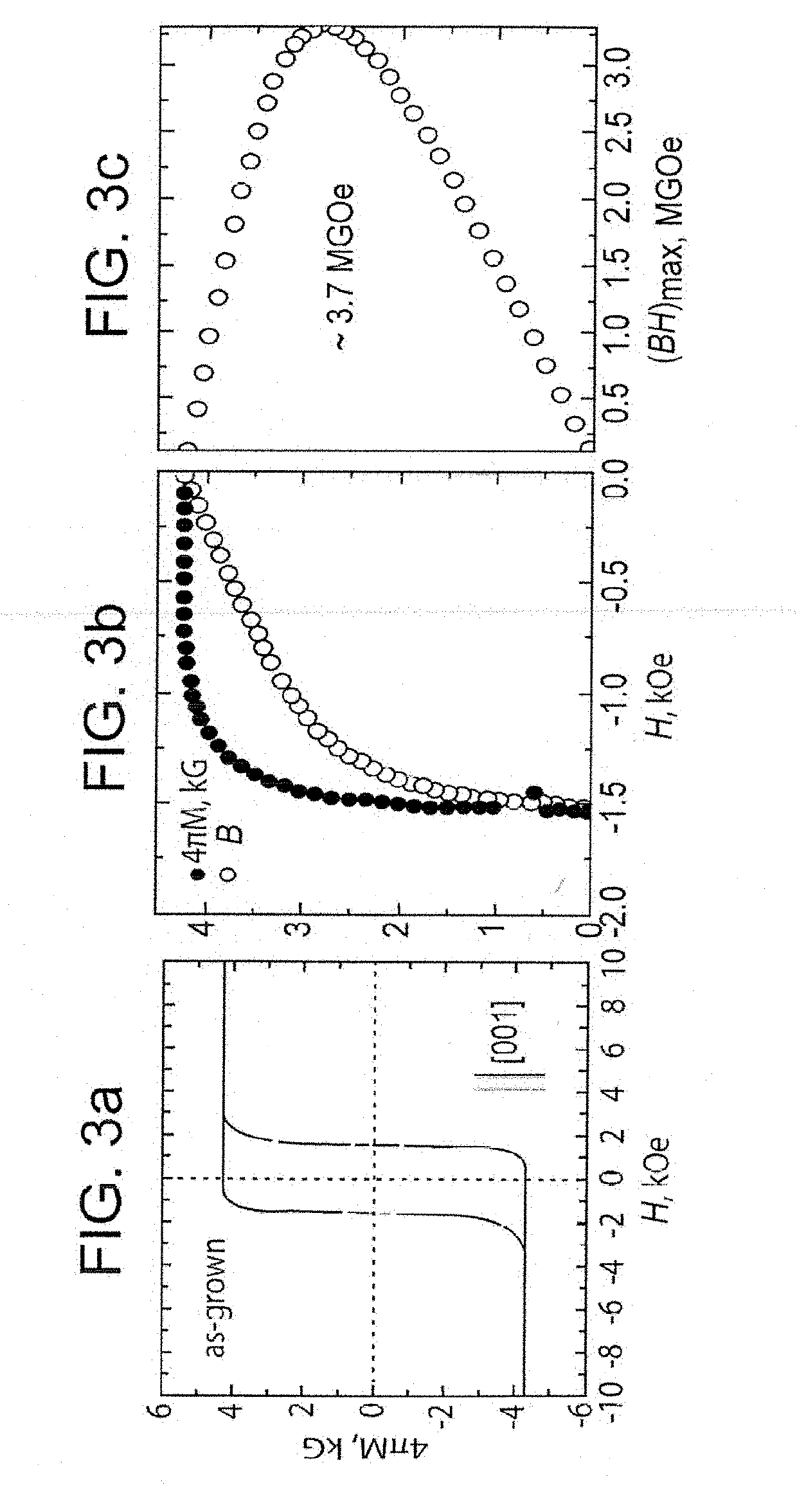Permanent magnet alloys for gap magnets
a permanent magnet, gap magnet technology, applied in the direction of magnetism bodies, polycrystalline material growth, crystal growth process, etc., can solve the problems of limited, scarce and limited single crystal growth reports in cu or fe substituted cecosub>5/sub>systems, and the intrinsic properties of cecosub>5/sub>-type systems have not been fully or systematically established, so as to reduce material costs, reduce supply dependence, and reduce material costs
- Summary
- Abstract
- Description
- Claims
- Application Information
AI Technical Summary
Benefits of technology
Problems solved by technology
Method used
Image
Examples
examples
[0041]This EXAMPLE #1 illustrates an initial experiment which resulted in realization of a Ce-substituted, Ta-doped RCo5-type magnet pursuant to an illustrative embodiment of the invention which had a particular alloy composition represented by Ce15.5Ta0.6Co67.8Cu16.1.
[0042]Well-formed plate-like crystals were obtained during self-flux single crystal growth from an initial loading composition Ce18Co62.32Cu19.68 in a Ta container at 1050-1070° C. The excess of flux was decanted by centrifuging at nearly reaction temperature. The exact temperature profile of this crystal growth is presented in FIG. 1 (see insert). Rietveld fitting of powder X-ray pattern taken from crushed single crystals, FIG. 1, shows that all Bragg reflections are well indexed within CaCu5-type structure (P6 / mmm. a=4.943(1), c=4.032(1) Å), providing strong argument for single-phase nature of the as-grown crystals. Additionally, SEM backscattered electron images of these crystals, FIGS. 2a-2c, revealed uniformity of...
example # 1a
Example #1A
[0050]In an attempt to reproduce the results of EXAMPLE #1 but in bulk ingot form and also for scaling-up material preparation, an approximate 8 gram are-melted button (ingot) was prepared to have the Ta-doped alloy composition of EXAMPLE #1; i.e., Ce15.5Ta0.6Co67.8Cu16.1. The alloy was prepared by arc-melting elemental constituents on a water-cooled copper hearth under partial vacuum with purified argon, rotated / flipped and re-melted twice for the homogenization.
[0051]FIG. 9a shows magnetic properties of both the bulk, non-aligned polycrystalline button (ingot) and the single crystal material after the same heat treatment; i.e., 1040° C. (10 hours)→cooling 10° C. / min.→400° C. (8 hours)→furnace cool to room temperature, i.e., cooling in the turned-off furnace to room temperature. Seemingly, both bulk and single crystal materials show nearly the same coercivity values and differ in Br and Ms, FIG. 9a. The latter result is anticipated considering polycrystalline and non-ali...
example # 2
Example #2
[0052]This example illustrates that Fe-for-Co substitutions in the Ta-doped composition of EXAMPLE #1 can result in improvement of saturation magnetization up to about 60 to about 65%.
[0053]For example, an approximate 8 gram are-melted button (ingot) was prepared to have a Fe-modified alloy composition; i.e., Ce15.5Ta0.6Co57.6Fe10.2Cu16.1 by arc-melting by arc-melting elemental constituents on a water-cooled copper hearth under partial vacuum with purified argon, rotated / flipped and re-melted twice for the homogenization.
[0054]FIG. 10 shows comparison hysteresis loops of the Fe-substituted composition bulk, unaligned sample and of the original bulk unaligned sample of EXAMPLE #1. FIG. 10 shows improvement of both coercivities and magnetizations in the Fe-substituted sample; i.e., Hc from about 6.3 to about 7.6 kOe, Br from about 2.1 to about 4.7 kG and Ms from about 3.2 to 5.2 kG.
[0055]The present invention envisions that up to about 20 atomic % of Co can be substituted by...
PUM
| Property | Measurement | Unit |
|---|---|---|
| temperature | aaaaa | aaaaa |
| temperature | aaaaa | aaaaa |
| solution temperatures | aaaaa | aaaaa |
Abstract
Description
Claims
Application Information
 Login to View More
Login to View More - R&D
- Intellectual Property
- Life Sciences
- Materials
- Tech Scout
- Unparalleled Data Quality
- Higher Quality Content
- 60% Fewer Hallucinations
Browse by: Latest US Patents, China's latest patents, Technical Efficacy Thesaurus, Application Domain, Technology Topic, Popular Technical Reports.
© 2025 PatSnap. All rights reserved.Legal|Privacy policy|Modern Slavery Act Transparency Statement|Sitemap|About US| Contact US: help@patsnap.com



